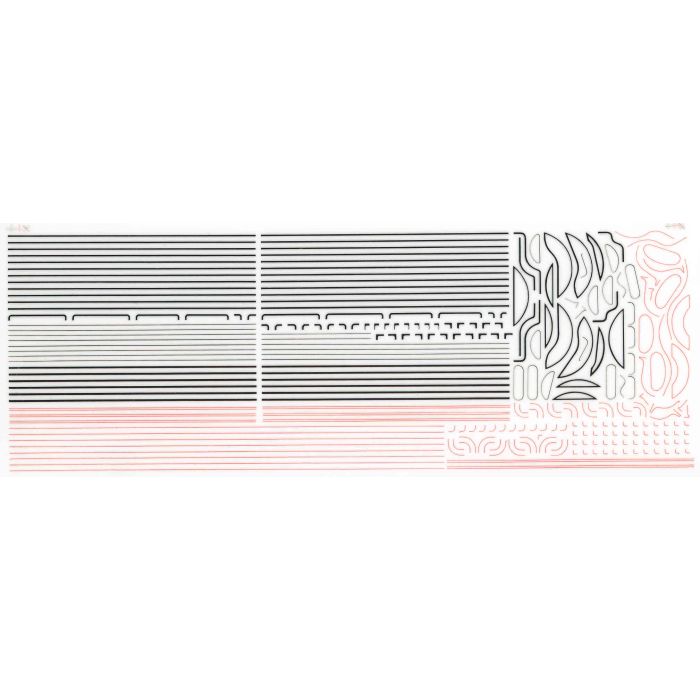LNER locomotive lining
GENERAL NOTES
The black and white lining is used for the green parts of green locos; the red lining is used on lined black locos and the black parts of green locos. Because of the wide variety of types involved, the special shapes will in many cases not be suitable as printed, but can be adapted to fit many more classes of locos. Many photos and more detailed information can be found in the RCTS series "Locomotives of the LNER".
LNER GREEN LOCOS. (use with HMRS Transfer Sheet 4)
The official list of classes is given in our Sheet 4 instructions. Generally, green areas were edged with black, with a white line between black and green. The black edge was normally broad on the tender (top, bottom and font edges - the top and bottom edging continued round the back without a break, on splashers and on the bottom edge of the cab. Black edges were narrow on cab front and back edges, around cab windows and on the front buffer beam. Boiler bands were black, edged with white both sides. Each tender side had a round cornered panel of black, edged white both sides, typically 4" from the bottom, 7" from the front and 9" from the back. The tender back had a similar panel, typically 6" from the sides and bottom. These panels were sometimes omitted on post-war green engines. Where footplate edges incorporated coupling rod splashers, they were green, with narrow black edging around the edges and openings. In other cases, footplate edges were black, as were loco and tender frames and outside cylinders. These black items were outlined in red, generally about
| Transfer Group | Railway Company Items |
|---|

